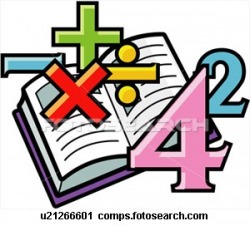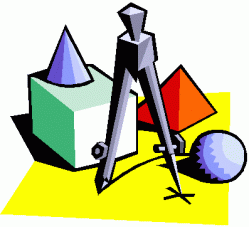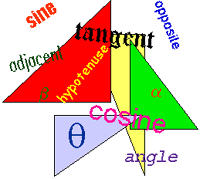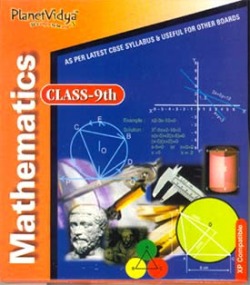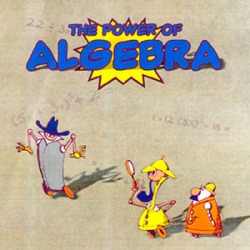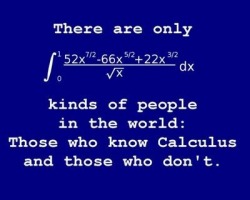Arithmetic
Arithmetic or arithmetics (from the Greek word αριθμός = number) is the oldest and most elementary branch of mathematics, used by almost everyone, for tasks ranging from simple day-to-day counting to advanced science and business calculations. It involves the study of quantity, especially as the result of combining numbers. In common usage, it refers to the simpler properties when using the traditional operations ofaddition, subtraction, multiplication and division with smaller values of numbers. Professional mathematicians sometimes use the term (higher) arithmetic when referring to more advanced results related to number theory, but this should not be confused with elementary arithmetic.
Geometry
Geometry (Ancient Greek: γεωμετρία; geo- "earth", -metria "measurement") "Earth-Measuring" is a part of mathematics concerned with questions of size, shape, relative position of figures, and the properties of space. Geometry is one of the oldest sciences. Initially a body of practical knowledge concerning lengths, areas, and volumes, in the 3rd century BC geometry was put into anaxiomatic form by Euclid, whose treatment—Euclidean geometry—set a standard for many centuries to follow. The field ofastronomy, especially mapping the positions of the stars and planets on the celestial sphere, served as an important source of geometric problems during the next one and a half millennia. A mathematician who works in the field of geometry is called a geometer.
Trigonometry
Trigonometry (from Greek trigōnon "triangle" + metron "measure") is a branch of mathematics that studies triangles, particularlyright triangles. Trigonometry deals with relationships between the sides and the angles of triangles and with the trigonometric functions, which describe those relationships, as well as describing angles in general and the motion of waves such as sound and light waves.
Mensuration
The act, process, or art, of measuring.
That branch of applied geometry which gives rules for finding the length of lines, the areas of surfaces, or the volumes of solids, from certain simple data of lines and angles.
Algebra
Algebra is the branch of mathematics concerning the study of the rules of operations and relations, and the constructions and concepts arising from them, including terms, polynomials,equations and algebraic structures. Together with geometry, analysis, topology, combinatorics, and number theory, algebra is one of the main branches of pure mathematics. The part of algebra called elementary algebra is often part of the curriculum in secondary education and introduces the concept of variables representing numbers. Statements based on these variables are manipulated using the rules of operations that apply to numbers, such as addition. This can be done for a variety of reasons, including equation solving. Algebra is much broader than elementary algebra and studies what happens when different rules of operations are used and when operations are devised for things other than numbers. Addition and multiplication can be generalized and their precise definitions lead to structures such as groups, rings and fields.
Calculus
Calculus (Latin, calculus, a small stone used for counting) is a branch in mathematics focused on limits, functions, derivatives, integrals, and infinite series. This subject constitutes a major part of modern mathematics education. It has two major branches, differential calculus and integral calculus, which are related by the fundamental theorem of calculus. Calculus is the study of change, in the same way that geometry is the study of shape andalgebra is the study of operations and their application to solving equations. A course in calculus is a gateway to other, more advanced courses in mathematics devoted to the study of functions and limits, broadly called mathematical analysis. Calculus has widespread applications in science,economics, and engineering and can solve many problems for which algebra alone is insufficient.
